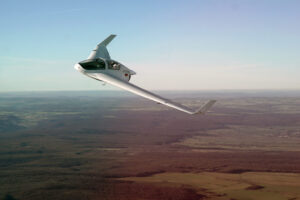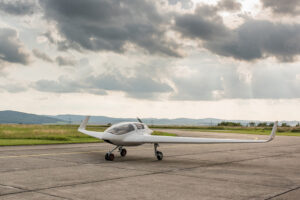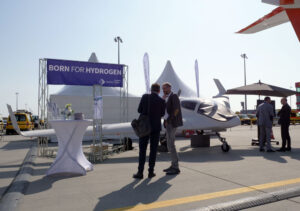During WWII, in Germany, Dr. Reimar Horten invented the flying wing.
During WWII, Dr. Reimar Horten invented the flying wing. Four different flying wing designs were in mass production by the end of the war. After the war ended the Allies prohibited further flying wing development in Germany. But the United States continued research of its own with Northrop`s flying wings. Years later Northrop Grumman built the well known B 2 bomber.
The first patent on flying wings is over 100 years old. After three years of development, Lindig and his team were able to present the first flight-tested prototype. The HORTEN HX2 is a state-of-the-art, economical, two-seat light aircraft. The German aircraft manufacturer Horten Aircraft presented the prototype of a civilian “flying wing” private plane at the AERO aviation fair in Friedrichshafen, Germany, in 2019.
Because of its low air resistance, the “flying wing” flies farther and faster than comparable aircraft with fuselage, said managing director Bernhard Mattlener.
Horten Aircraft plans further models
Horten Aircraft plans further models with unmanned or multi-seat variants based on the current prototype. The aircraft are to be built at the company’s headquarters, at the Kindel airfield near Eisenach. The prototype for test flights also takes off and lands from there. The flights are used to precisely determine flight performance and flight characteristics.
The first designs for “Nurflügel” already existed at the beginning of the 20th century, in 1910 Hugo Junkers received a corresponding patent. The company name is reminiscent of the visionary aircraft designer Reimar Horten (1915-1994), who is considered a pioneer in the field of flying wing technology.
In contrast to the conventional aircraft – in which the fuselage and tail unit do not generate lift but create resistance – everything that creates resistance also creates lift on the flying wing aircraft, company boss Bernhard Mattlener explains the principle. Meanwhile, his company is the world leader in the development of civilian flying wing aircraft. The technology has long been used in the military. But the Thuringians see enormous potential, especially in civil aviation. Especially since you are already thinking about the development of alternative drives. A hybrid or pure electric motor is just as conceivable as a hydrogen-based fuel cell.
Due to its special design, alternative fuels can be used in the future – primarily hydrogen. It has a three times higher energy density than kerosene and generates neither greenhouse gases nor nitrogen oxides in a fuel cell. The two-seater F2, is not only available with a combustion engine, but also flies battery-operated electrically.
The electric drive, whether with a battery or a fuel cell, will further boost general aviation by reducing operating costs. Even if it will take years before autonomous flying, studies predict future billion markets.
Our prototype continues to make its rounds at the Kindel airfield near Eisenach, ”says Mattlener. The Federal Aviation Office is requesting further data, and further test results, for example on stability at higher speeds, are required.
Meanwhile, the company’s developers are already thinking about building a larger, four-seat instead of two-seat model. Even possible routes for the use of a flying wing aircraft have been identified, it could one day transport passengers and freight between Tallin and Helsinki.







Please can you tell me the cross wind landing specification? Also, I am concerned about the honey comb carbon composite wing versus a traditional aluminum wing with steel wing internal support structure. What happens if the wing is bumped or touches the ground? Does it, …crack?
The center of gravity looks tight. Are there flight speed restrictions? Does the CG change if the weight of the fuel decreases due to use? What is the power on and power off stall speeds? Landing approach speed?
What is the cost?
I read all about the Horton wing design issues. At this low speed this should be ok, but the wing surface area seems low as does the robustness of the landing gear. It reminds me of the Burt Routan aircraft.
If you land hard will the landing gear collapse? I mean even the tires look really small.
Interesting questions, albeit too difficult for me to answer. Thanks.